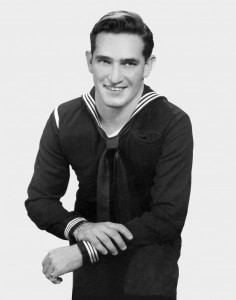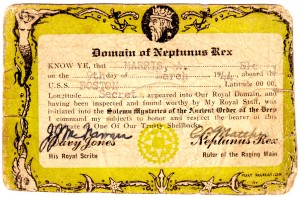Task Force 58 (and its alter-ego Task Force 38) was the “first-man-in” as the United States (the Allies) advanced methodically westward across the Pacific toward Japan. The ships would attack island groups and enemy bases in advance of amphibious landings in which Marines and infantrymen would slug it out with entrenched, well equipped and tenacious Japanese soldiers, who were ordered to fight until the last man fell – no surrender.
Iwo Jima, like all the “landings” before, proved to be a grueling battle of attrition in which only 216 of the (approximately) 22,000 Japanese defenders taken prisoner by the time the island was declared “secure” on March 26, 1945 – 35 days after the initial assault. The rest were killed. Despite the massive air and ongoing ship bombardments leading up to and during the invasion, there were almost 26,000 American casualties (6,825 dead).
The next “Home Island” target was Okinawa, which proved to be a horrifying harbinger of the planned Invasion of Japan (Operations Olympic and Coronet). There were as many as 500,000 Okinawan civilians living on the island. “Final” casualty counts estimate that as many as 42,000 civilians died, including unknown hundreds who hurled themselves en masse off cliffs rather than be captured by the barbaric Americans. About 108,000 Japanese soldiers (including about 20, 000 Okinawans “conscripted” into the Army) were killed. American assault troop casualties totaled 12,000 killed and about 38,000 wounded.
Japanese strategists had a special surprise for the Americans. They unleashed ten massive raids of kamikaze planes and fighter escorts against both the invasion fleet just offshore and the Task Force ships ranging further offshore. Between April 6 and June 22, 1945, Kikusui Raids (“Floating Chrysanthemums”) swarmed Navy ships day and night. Total numbers are unknown, but some of the raids consisted of several hundred kamikazes and equal numbers of conventional fighter planes and bombers. Hardest hit group were the “Picket Destroyers” stationed in strategic locations around Okinawa as “early warning radar posts” to protect the beachhead invasion and the carriers further offshore from enemy air attacks. The kiketsui extracted a heavy toll: more than 5,000 sailors killed, 21 ships sunk and 66 more damaged — some so heavily they were out of commission for the rest of the war.
The Boston and her crew escaped this madness. They were ordered home for retrofits and repairs in advance of the planned invasion of Japan.


